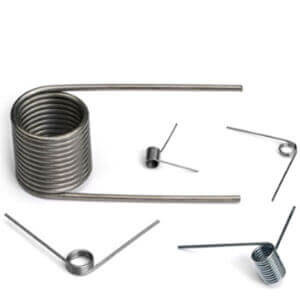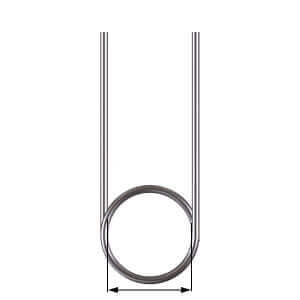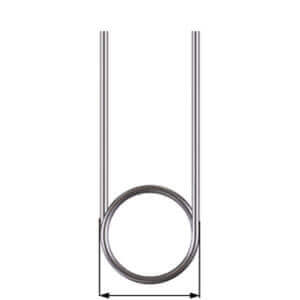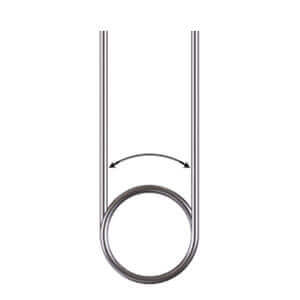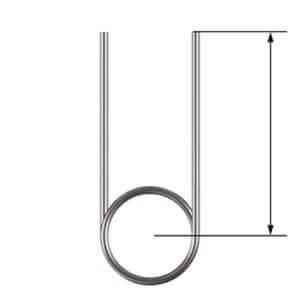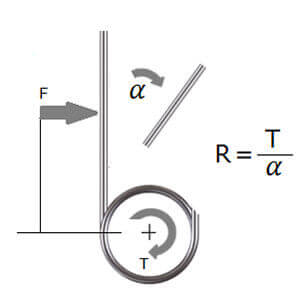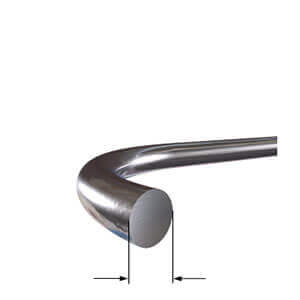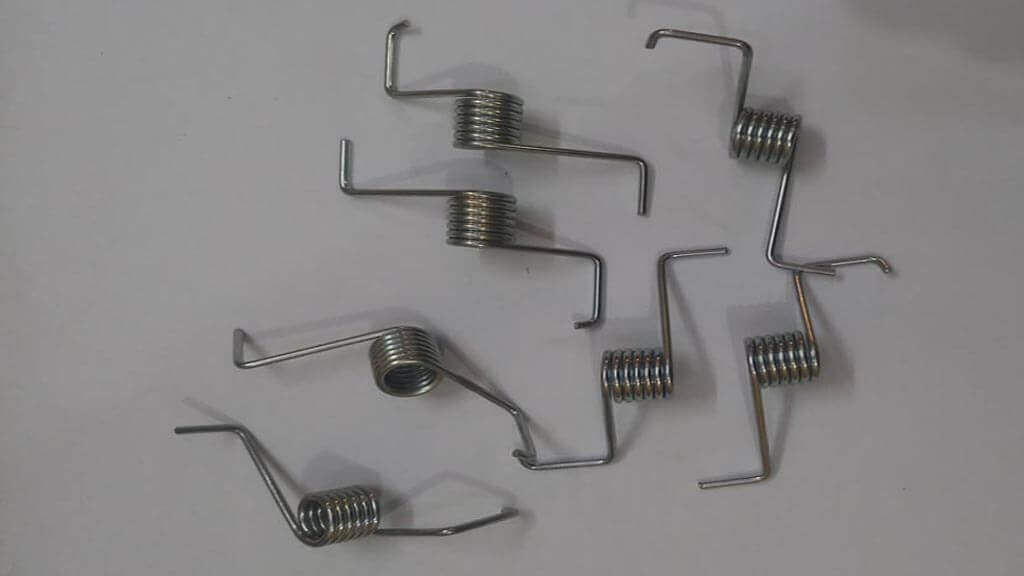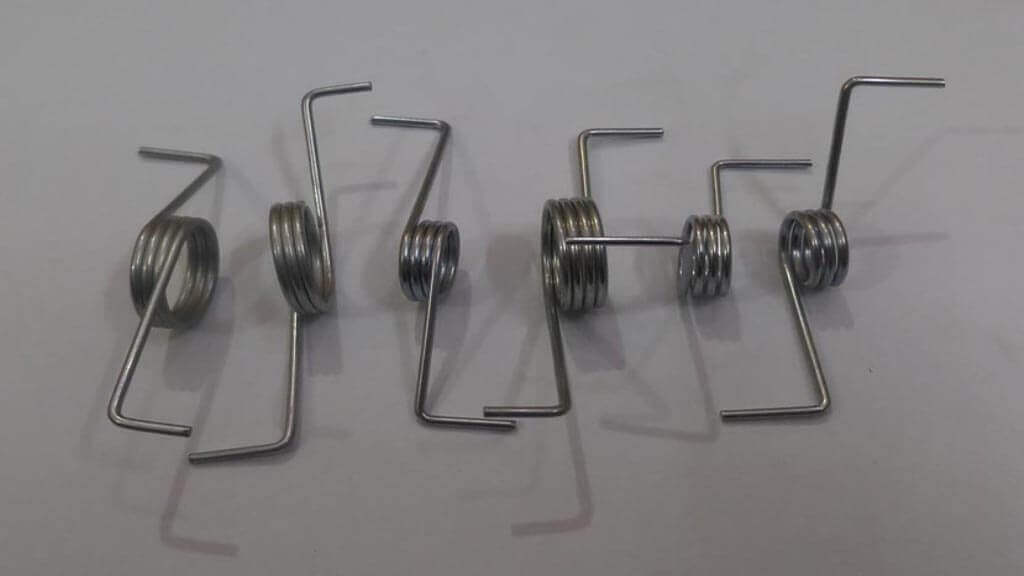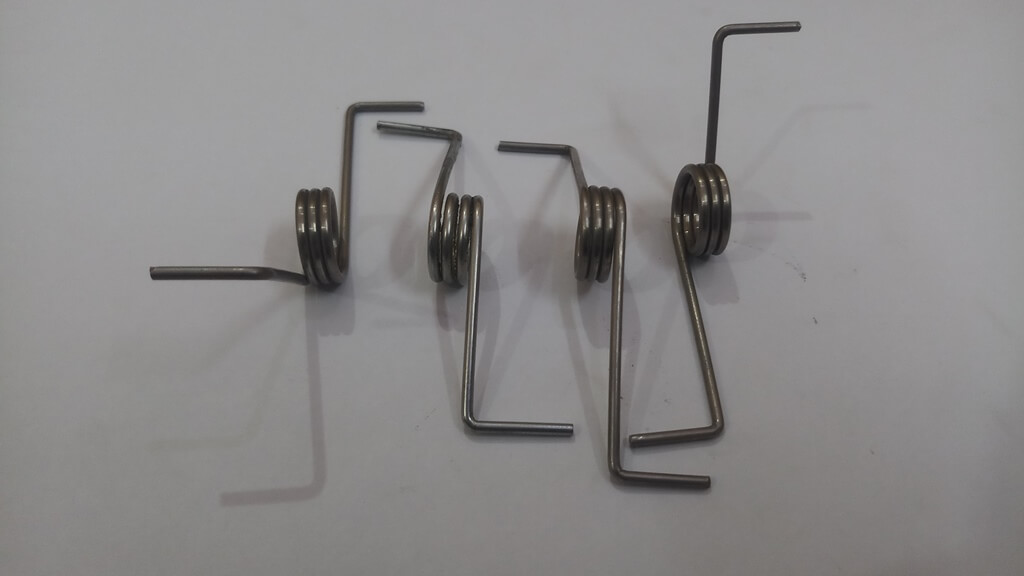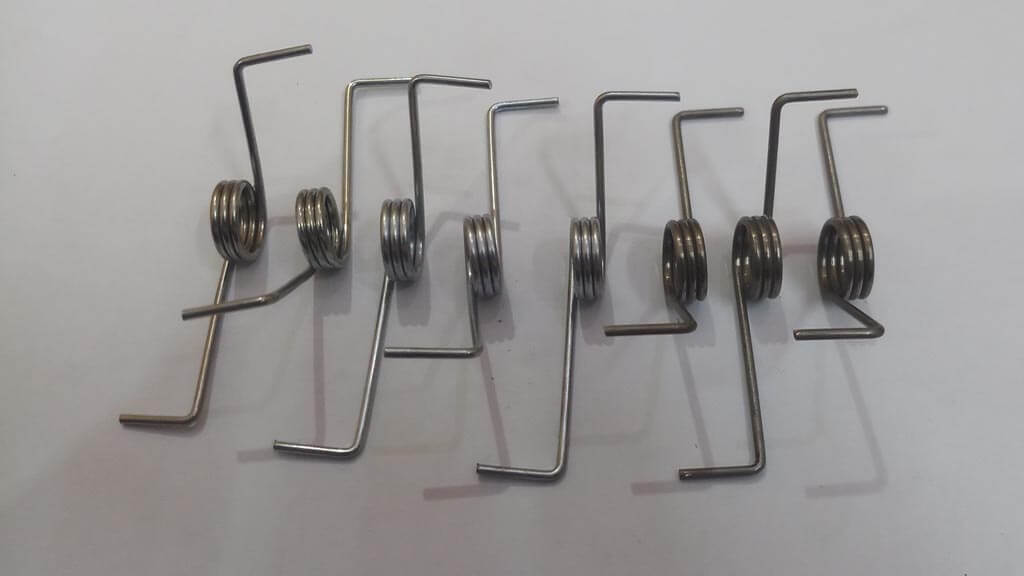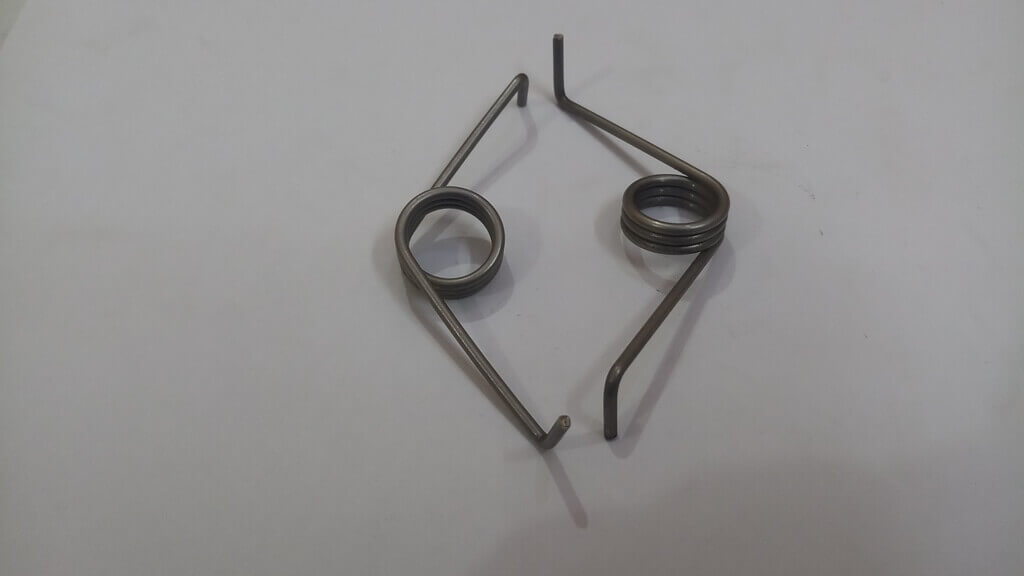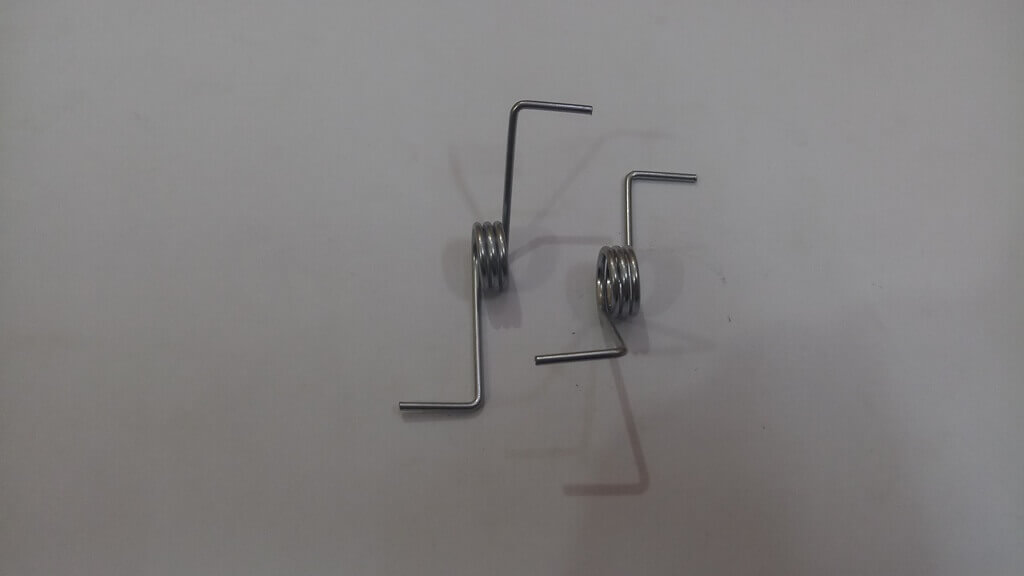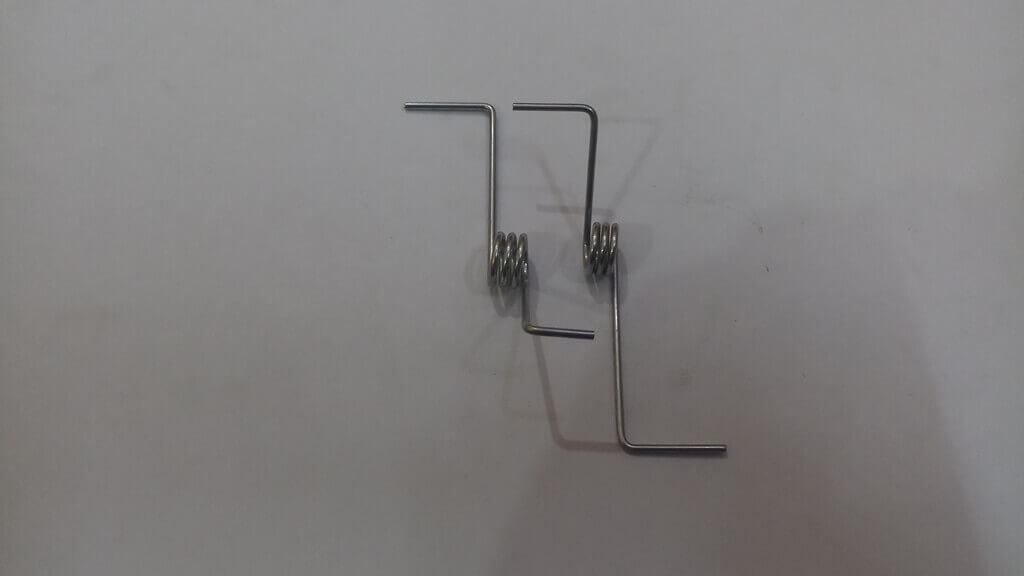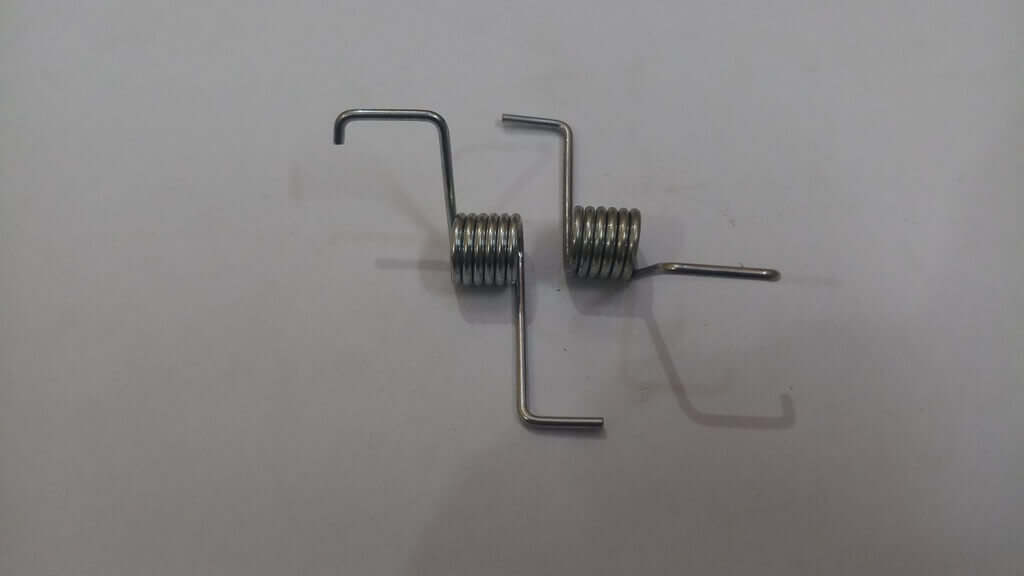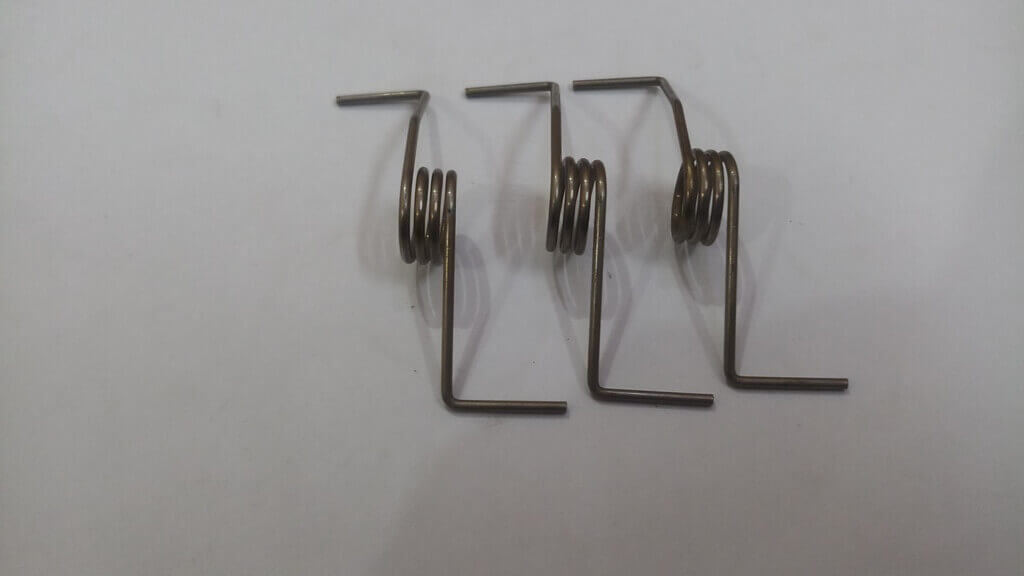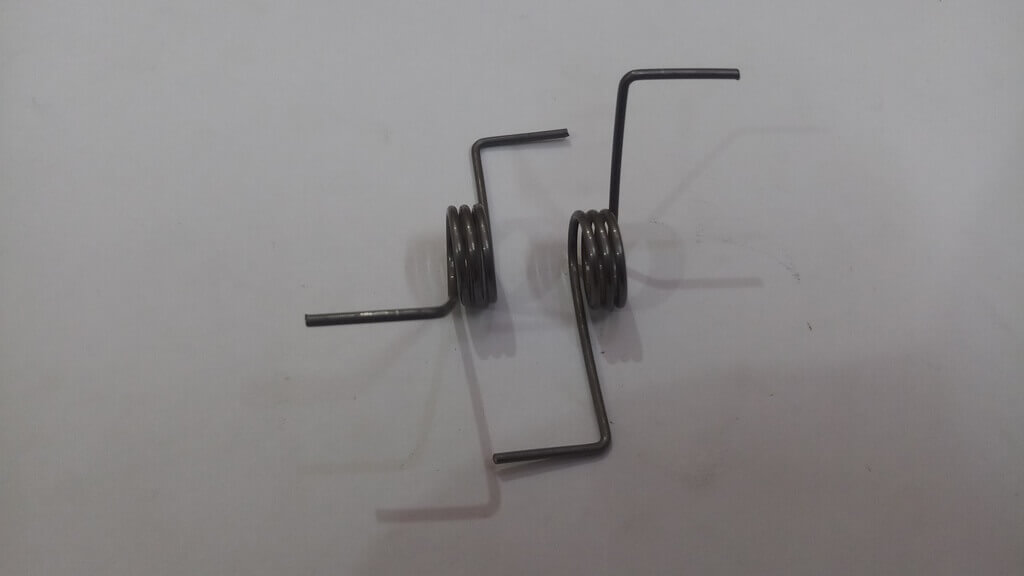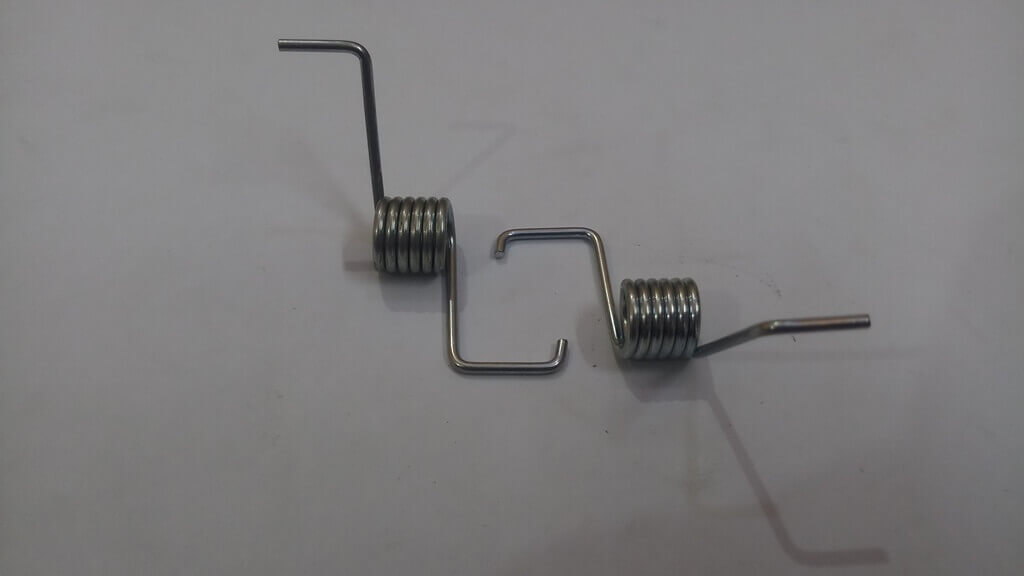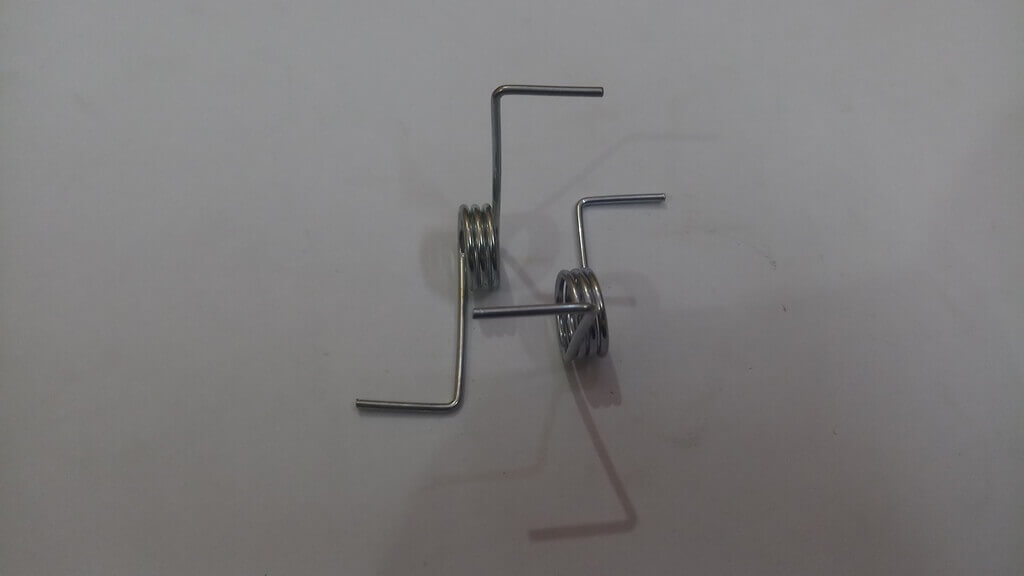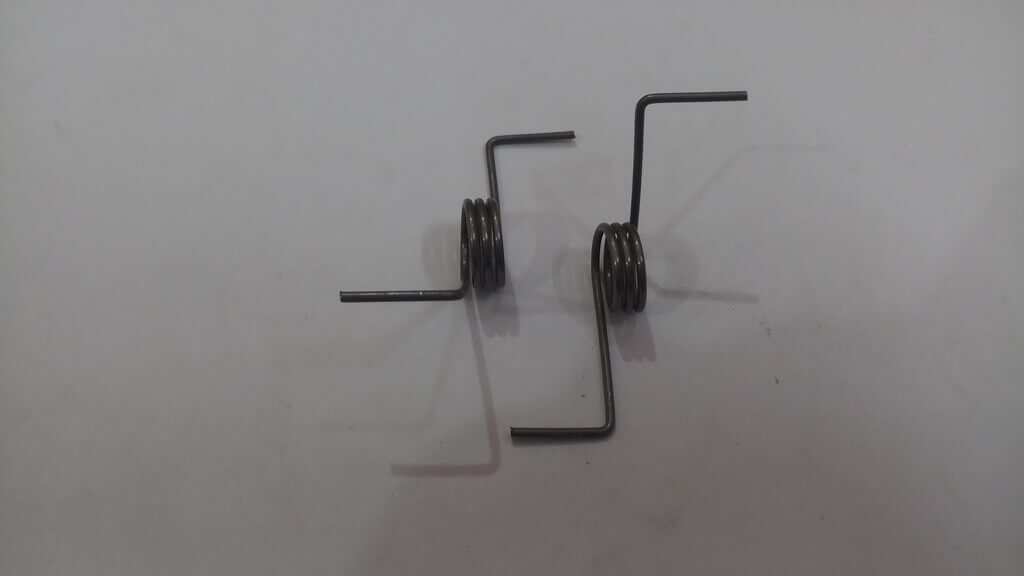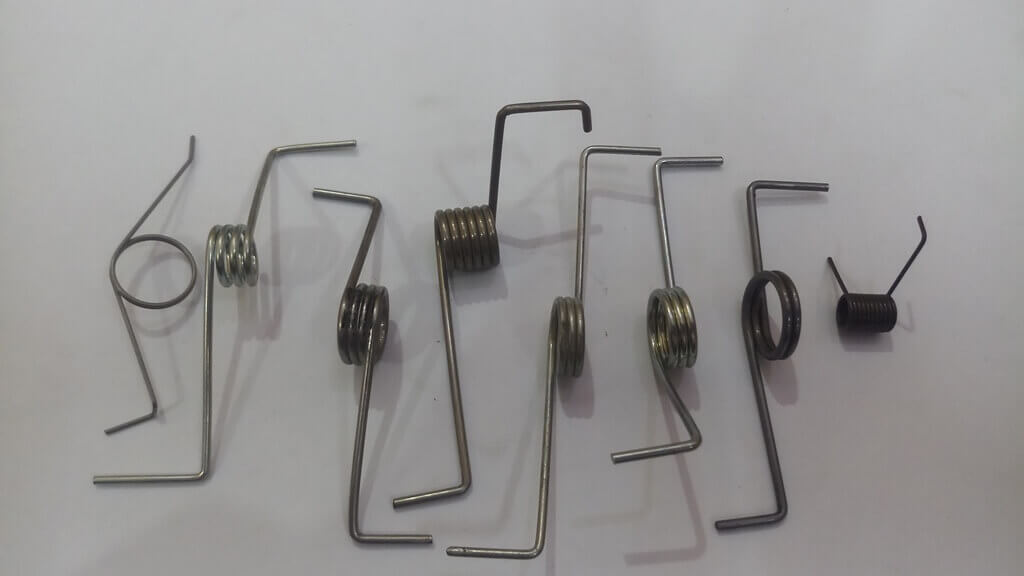
Torsion springs, whose ends are rotated in angular deflection, offer resistance to externally applied torque. The wire itself is subjected to bending stresses rather than torsional stresses, as might be expected from the name. Springs of this type are usually close wound, reduce in coil diameter, and increase in body length as they are deflected. The designer must consider the effects of friction and arm deflection on the torque.
Heavy Duty Torsion Springs Design Formulas
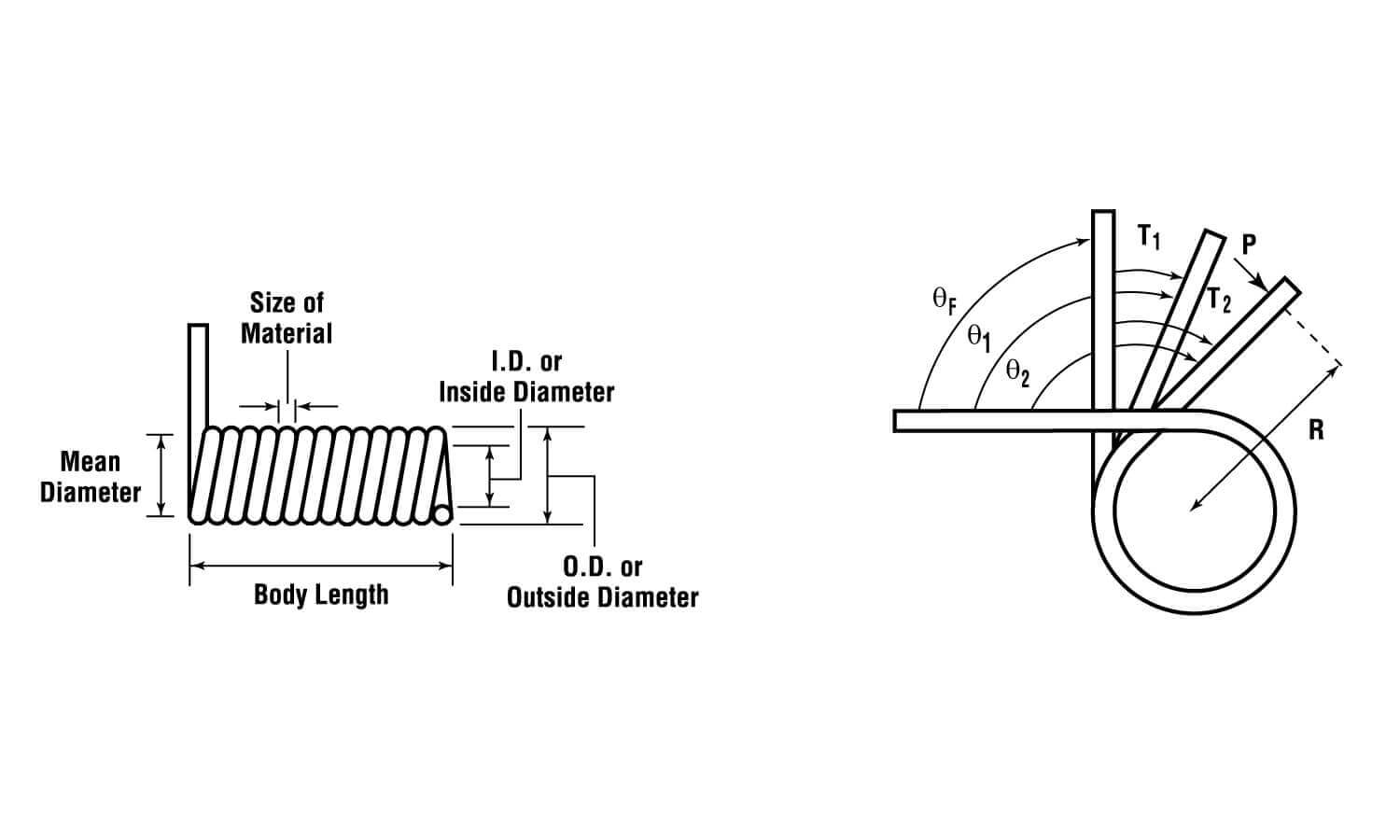
The basic formulas for torque or moment (M) and bending stress (S) used in designing torsion springs are shown below.
In the formulas the constants 10.8 and 6.6, while not strictly theoretical, give results closer to the actual values obtained. In the formulas, the constants 10.8 and 6.6, while not strictly theoretical, give results closer to the actual values obtained.
D = Mean coil diameter, in. (mm)
E = Modulus of elasticity, psi (MPa)
d = Diameter of round wire, in. (mm)
S = Bending stress, psi (MPa)
Nt = Number of coils
M = Moment or torque, ibin. (Nmm)
T = Deflection, number of turns or revolutions of spring
b = Width, in. (mm)
t = Thickness, in. (mm)

